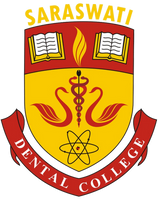
Oral cancer detection is a critical aspect of oral health care, as early diagnosis significantly improves treatment outcomes and overall prognosis. Several methods and techniques are employed for the detection of oral cancer, ranging from clinical examination to advanced imaging modalities.
1. **Visual Examination**: Visual inspection of the oral cavity and surrounding tissues is the primary method for detecting oral cancer. Dentists and oral health professionals carefully examine the lips, tongue, cheeks, palate, gums, and throat for any abnormalities, such as changes in color, texture, or the presence of lesions, ulcers, or masses.
2. **Tactile Examination**: Palpation of the oral tissues allows clinicians to identify any areas of swelling, induration, or tenderness that may indicate underlying pathology. Digital palpation of the neck and cervical lymph nodes is also essential to assess for any palpable masses or lymphadenopathy, which may suggest metastatic spread of oral cancer.
3. **Use of Adjunctive Tools**: Various adjunctive tools, such as toluidine blue staining, chemiluminescence, and tissue fluorescence visualization devices, can enhance the detection of potentially malignant and malignant lesions by highlighting areas of abnormal tissue morphology or vascularity.
4. **Biopsy and Histopathological Examination**: Definitive diagnosis of oral cancer requires a tissue biopsy of suspicious lesions, followed by histopathological examination by a pathologist. Biopsy techniques may include incisional, excisional, or punch biopsies, depending on the size and location of the lesion.
5. **Advanced Imaging Modalities**: In cases where clinical examination and biopsy are inconclusive or further characterization of the lesion is required, advanced imaging modalities such as computed tomography (CT), magnetic resonance imaging (MRI), positron emission tomography (PET), or optical coherence tomography (OCT) may be employed to evaluate the extent of tumor involvement and guide treatment planning.
Regular screening and early detection programs are essential for identifying oral cancer at its earliest stages when treatment is most effective. Public awareness campaigns, education of healthcare professionals, and routine oral cancer screenings during dental visits play a crucial role in promoting early detection and improving survival rates for patients with oral cancer.


No Any Replies to “ORAL CANCER DETECTION”
Leave a Reply